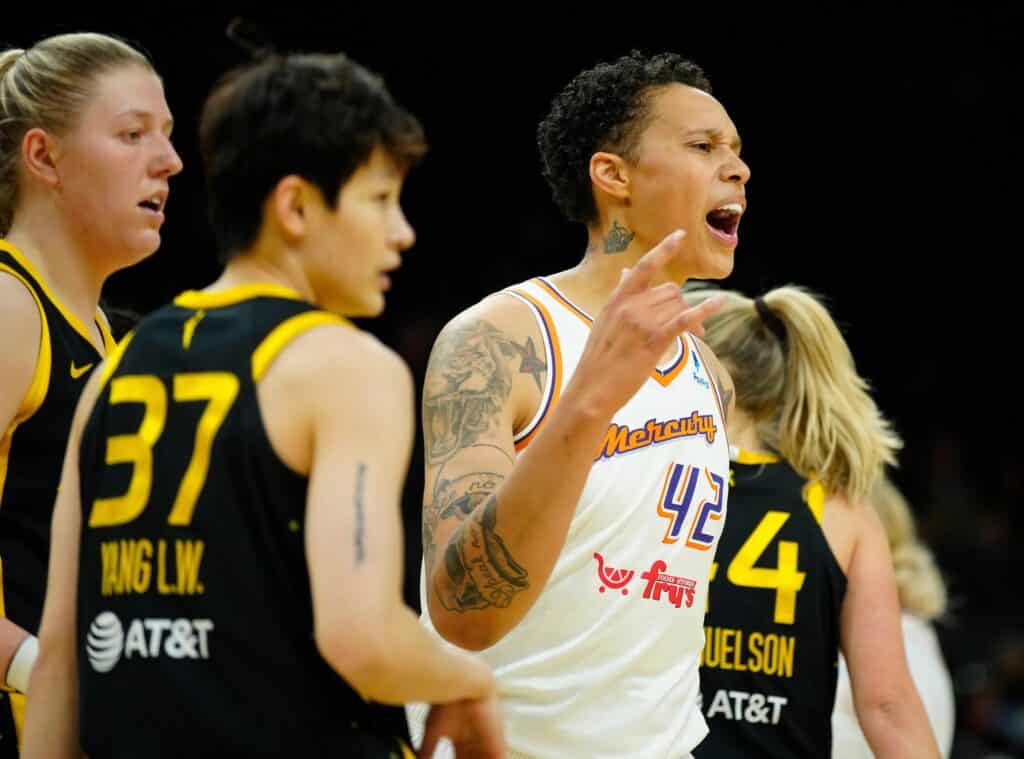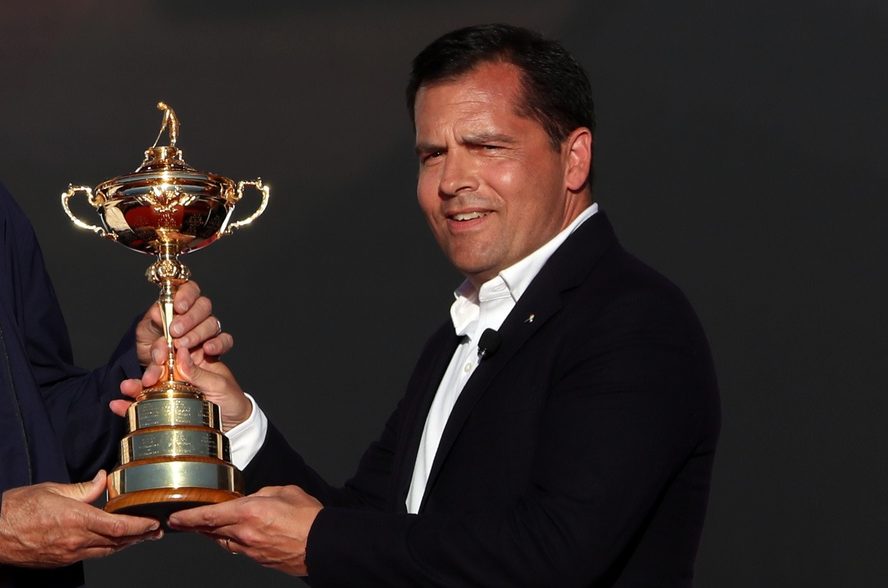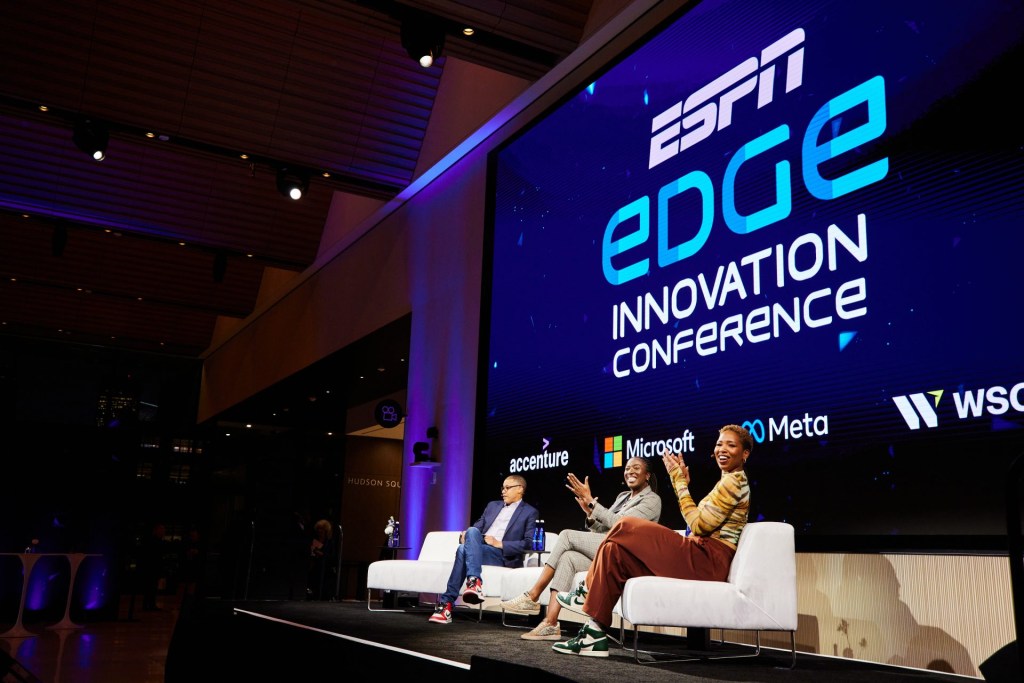The WNBA’s 27th season launches this weekend — and one of the league’s top stars almost skipped it.
Breanna Stewart entered free agency in the offseason after seven years with the Seattle Storm, with whom she won an MVP and two Finals MVPs with her two title rings. Like so many others, she played abroad last fall, with no guarantee she’d return.
Now playing for the New York Liberty, the All-Star returns to a shifting landscape.
“Our goal is to make this the best it can possibly be, and I think we’re nowhere near scratching the surface of where this league can become,” Stewart told Front Office Sports this month. “And that’s what’s most exciting. The fact that women’s sports receives less than 5% of sports media coverage is kind of crazy, and hopefully, we’ll get to this point where we’re … not having to fight over this 5%.”
In some ways, the WNBA remains stuck in 1997 — the year the league launched despite a product viewed by many as less compelling as its predecessor, the American Basketball League. But backed by the NBA, the WNBA survived, and the ABL ceased operations in 1998.
Only four of the original WNBA eight teams are still in operation: the Los Angeles Sparks, the Liberty, the Phoenix Mercury, and the Las Vegas Aces (originally the Utah Starzz). Even when the league expanded to 12 teams in 2008, NBA Commissioner Adam Silver said it was losing $10 million a year.
Exactly how much money the 12-team league is losing — or now possibly making — is a frequent topic of discussion among players and their reps.
One person in a WNBA ownership group told FOS the league may have only one profitable team: the Seattle Storm.
Still, the source said, “We are not over here crying poverty.”
Some owners are open to spending now for a payoff down the line. For example, the Las Vegas Aces became the first WNBA franchise to open their own practice facility. The Storm is planning to build a similar facility.
“To get there, you have to invest in the product,” the ownership source said. “There are several owners doing that, but there are a lot of legacy owners who are just tired because they put a lot of money in and lost it. They don’t want to invest anymore.
“The league is only as strong as the weakest link. And if we can’t get on the same page, it’s going to be tough to build.”
One agent spoke to FOS on condition of anonymity over fear of retaliation, adding, “They’re stuck in the old mold because a lot of the same people still work at the league and still work at teams. They have not really gotten creative. They haven’t innovated to help the league move along with the times.”
“There’s a reason women’s soccer and NWSL has progressed faster than the W has. It’s a much, much younger league.”

Eye On Expansion
WNBA commissioner Cathy Engelbert outlined to FOS her five-year plan after a historic investment for a women’s sports league that was announced early last year. While players will again fly commercial this season, teams will fly charter for the entirety of the playoffs.
“We are deploying that [$75 million] capital in a way that’s going to fund the long-term growth of the league, and the players are going to benefit for a long time,” said Engelbert, the league’s first commissioner in her fifth season on the job. “Rome wasn’t built in a day. We’re in a three-to-five-year deployment of that capital we raised [in] February [2022] to grow this league, and we’re already seeing those returns.”
For the past 18 months, the WNBA has been analyzing the demographics of cities for potential expansion. “Lots of cities have called us, and we’re looking at about 10 now,” Engelbert said, adding that the league hopes to expand to “a couple cities” in time for the 2025 season.
“I always throw out the Bay Area as an example. You think how strong the Stanford [University] women’s team has been over the years,” Engelbert said. “You look at demographics and psychographics — what’s our current fan base, and where do we draw from? Seattle has an amazing fan base — who are their fans, and would that work in another city like Austin or Denver or Nashville or Charlotte?”
Toronto is another strong candidate for expansion after the city’s Scotiabank Arena sold out tickets for a WNBA preseason game earlier this month.
But from the players to the teams to the WNBA front office, there’s an eye on 2025, the final year of the league’s deal with ESPN — and when its players association can opt out of the collective bargaining agreement.
ESPN’s Bargain Limits League
In May 2016, ESPN and the WNBA announced a new broadcast agreement, both touting the doubling of annual rights fees to $25 million.
The WNBA averaged 224,000 viewers during the 2016 season, then dropped to an all-time low average of 174,000 the next season.
Compared to 2017, viewership more than doubled to 372,000 viewers in the 2022 regular season, and the WNBA averaged 465,000 viewers in the playoffs. The highlight: Game 1 of the Finals, which drew 550,000 viewers to ABC to watch the Las Vegas Aces beat the Connecticut Sun 67-64 on their way to the title — in a head-to-head TV matchup against Week 1 of the NFL season.
That $25 million deal is now a bargain for ESPN — and a major reason why league revenues and thus player pay are in their current state.
“We get zero [in-broadcast] revenue compared to other leagues, and it’s absolute bull—t,” the ownership source said. “Now, we are in a place where we have to earn [the next deal].”
In April, it was announced the E.W. Scripps Company signed a multiyear deal to carry Friday night WNBA games on its Ion Television network. But Engelbert’s WNBA has been working to find other solutions outside its main TV partner to pay players.
“Things like more marketing dollars to improve our app, our fan engagement — and yes, we’ve actually returned a bunch of that to players, which for some reason the media refuses to write about,” Engelbert said.
The Commissioner’s Cup — with a prize pool of $500,000 for the championship team — was announced before the 2021 season. And in the aftermath of the capital raise, which valued the league at $1 billion, Engelbert bolstered the marketing agreement program, part of the 2020 CBA. It can pay 10 players per season up to $250,000 per year — if they don’t play overseas.
Bloomberg estimated that the WNBA will make as much as $200 million this year, while player salaries were at 9.3% of league revenues last year. Players in other major sports leagues, including the NBA, get about half of the league revenues.

Elephant In The Room
Even when the marketing money and this season’s league-max salary ($234,936) are factored in, top players could still make more overseas — although not without risk.
Brittney Griner’s ill-fated spell in Russia ended with 294 days in prison before the Biden administration negotiated a prisoner swap in December 2022.
Now, like the marketing program, prioritization is an integral part of the current collective bargaining agreement.
This year, players under contract but playing overseas are fined 1% for each missed day of camp and suspended for the season if they miss the start of the regular season. Next season, players will be suspended if they don’t report for the start of training camp.
It appears that Storm power forward Gabby Williams — currently playing for her French club in the midst of the playoffs — could be the most notable player to run afoul of the league’s prioritization rules. When the Storm announced their roster on Thursday, Douglas wasn’t on it.
“Gabby Williams is not a max player, so I would have absolutely told her to make an overseas contract a priority over the WNBA,” an agent said. “That’s a call a player has to make. I would counsel them to do what’s best for them.”
There was one scenario that some players and agents would have loved to see play out: Stewart opting to skip this WNBA season over the prioritization rules.
“They weren’t going to tell Stewie she couldn’t play this season,” the agent said. “That could have changed things before the CBA expires.”

















